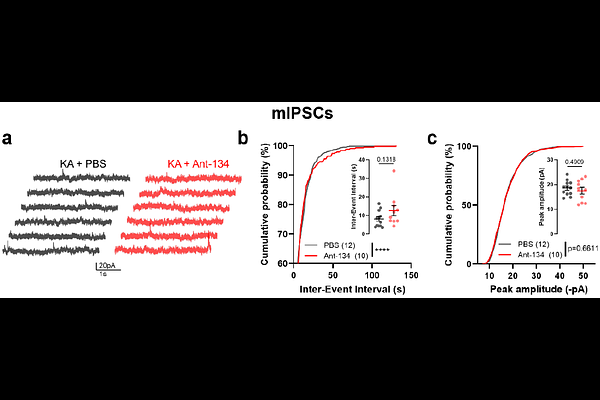Attenuated single neuron and network hyperexcitability following microRNA-134 inhibition in mice with drug-resistant temporal lobe epilepsy

Attenuated single neuron and network hyperexcitability following microRNA-134 inhibition in mice with drug-resistant temporal lobe epilepsy
Sarti, P. Q.; Higgins, J.; Heiland, M.; Sanz-Rodriguez, A.; Cunningham, M. O.; Mamad, O.; Henshall, D.
AbstractThe multi-factorial pathophysiology of acquired epilepsies lends itself to a multi-targeting therapeutic approach. MicroRNAs (miRNA) are short noncoding RNAs that individually can negatively regulate dozens of protein-coding transcripts. Previously, we reported that central injection of antisense oligonucleotides targeting microRNA-134 (Ant-134) shortly after status epilepticus potently suppressed the development of recurrent spontaneous seizures in rodent models of temporal lobe epilepsy. The mechanism(s) of these anti-seizure effects remain, however, incompletely understood. Here we show that intracerebroventricular microinjection of Ant-134 in male mice with pre-existing epilepsy caused by intraamygdala kainic acid-induced status epilepticus potently reduces the occurrence of spontaneous seizures. Recordings from ex vivo brain slices collected 2-4 days after Ant-134 injection in epileptic mice, detected a number of electrophysiological phenotypic changes consistent with reduced excitability. Specifically, Ant-134 reduced action potential bursts after current injection in CA1 neurons and reduced miniature excitatory post-synaptic current frequencies in CA1 neurons. Ant-134 also reduced general network excitability, including attenuating pro-excitatory CA1 responses to Schaffer collateral stimulation in hippocampal slices from epileptic mice. Together, the present study demonstrates inhibiting miR-134 reduces single neuron and network hyperexcitability in mice and extends support for this approach to treat drug-resistant epilepsies.